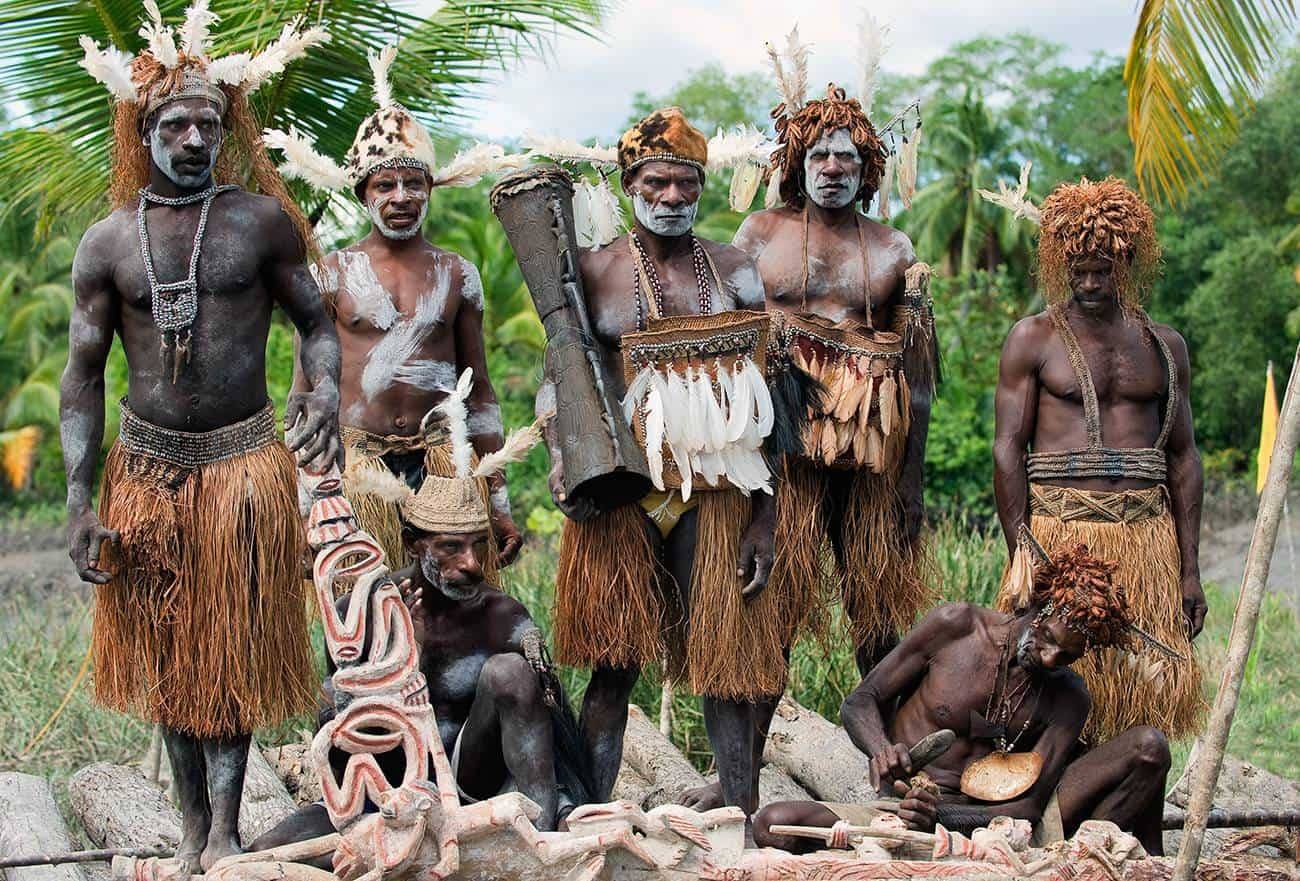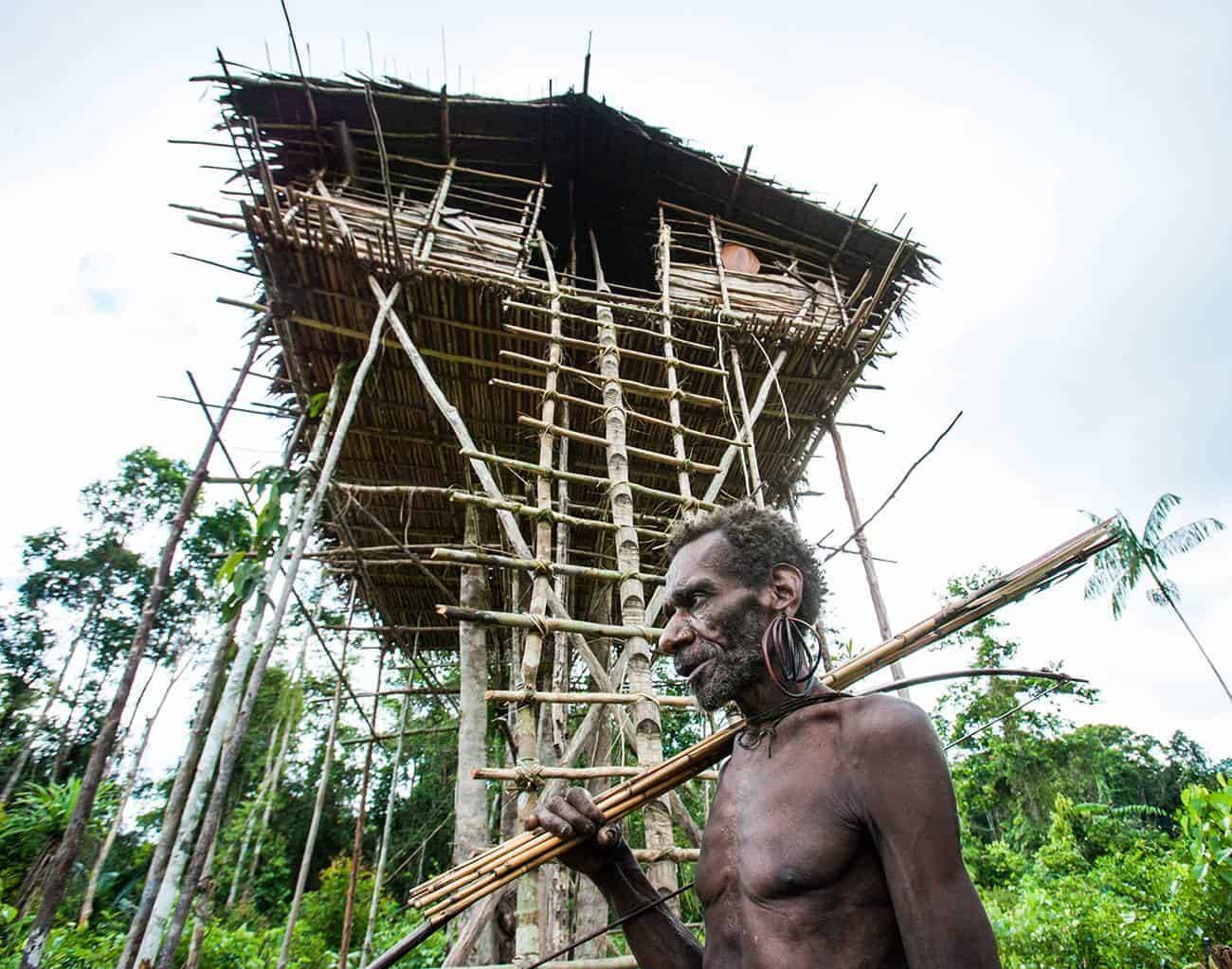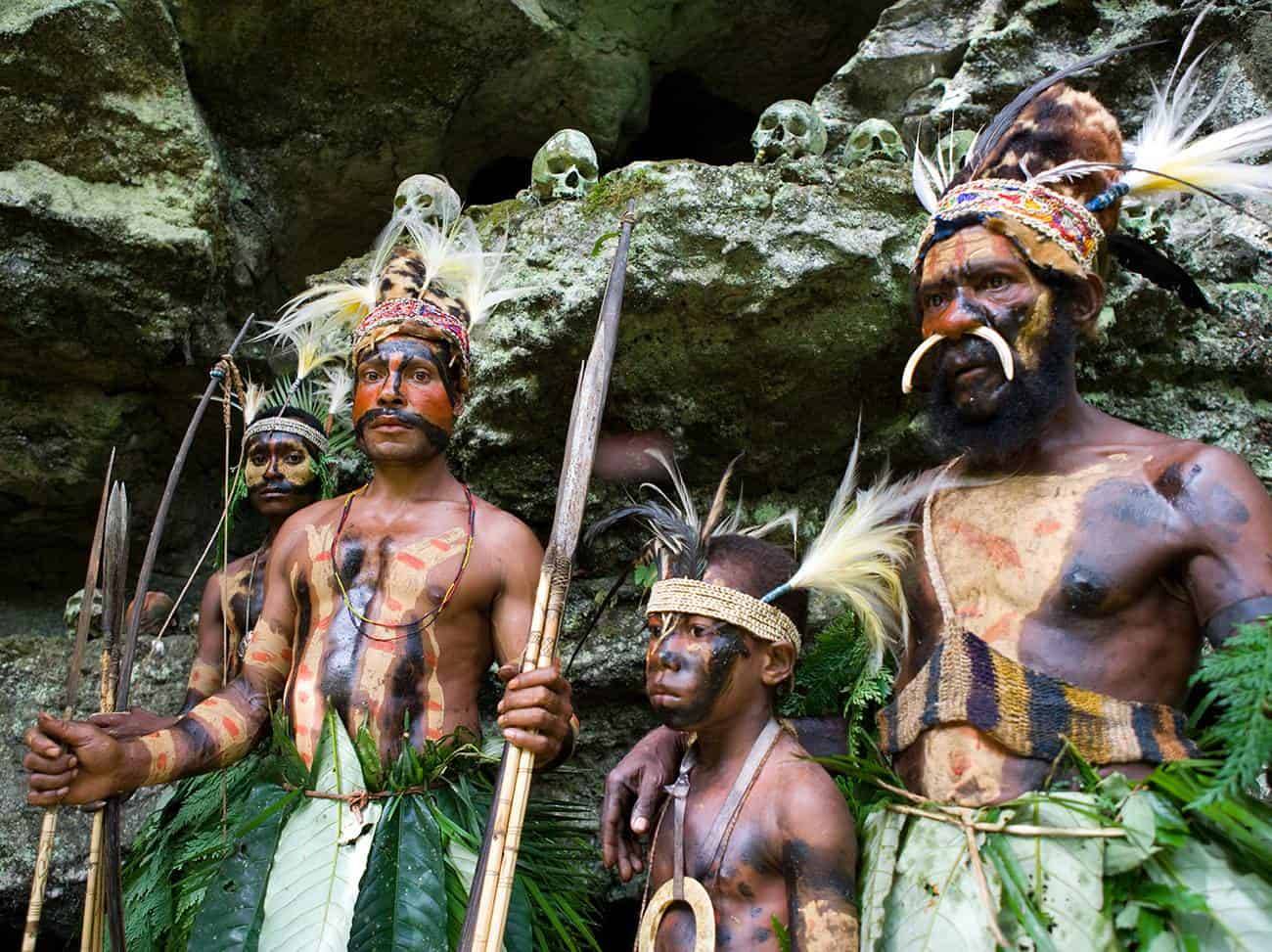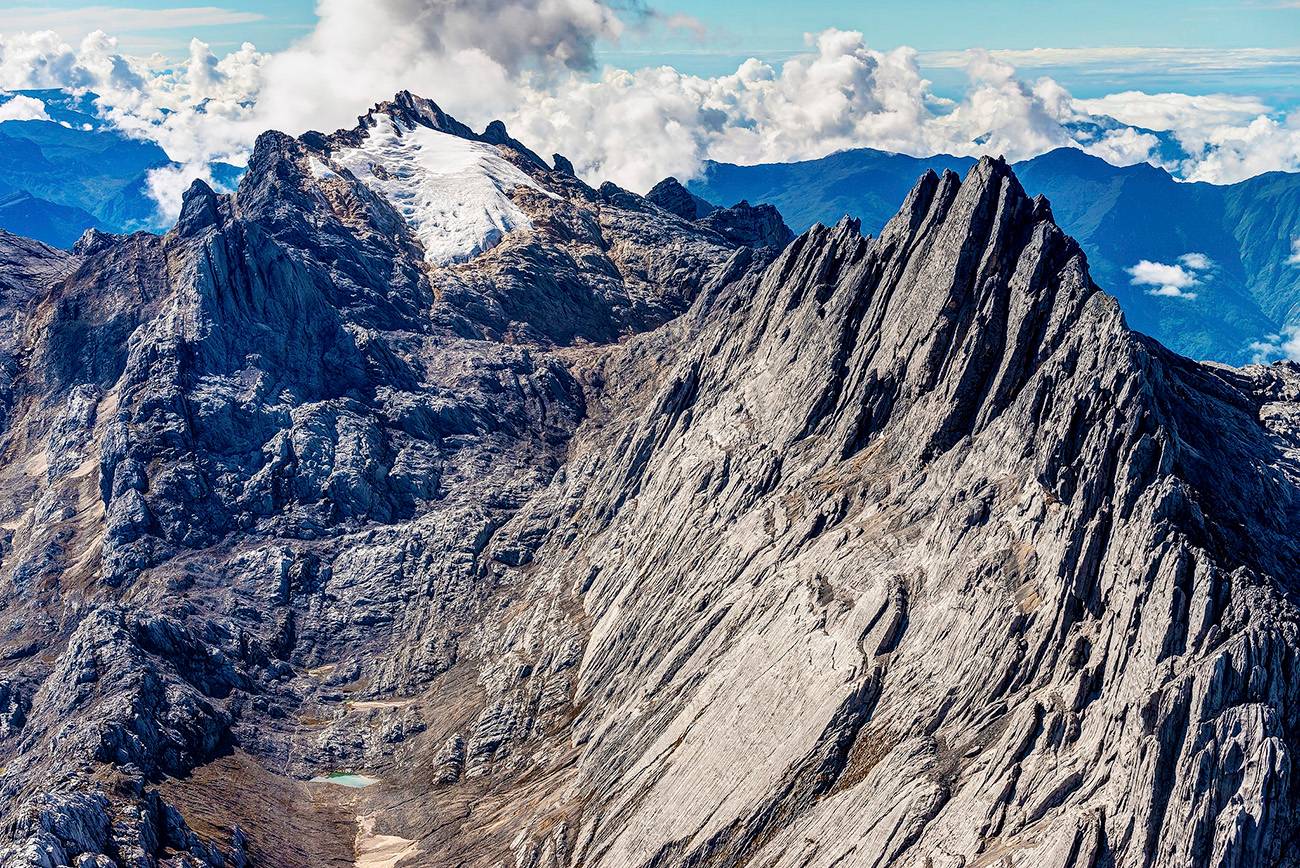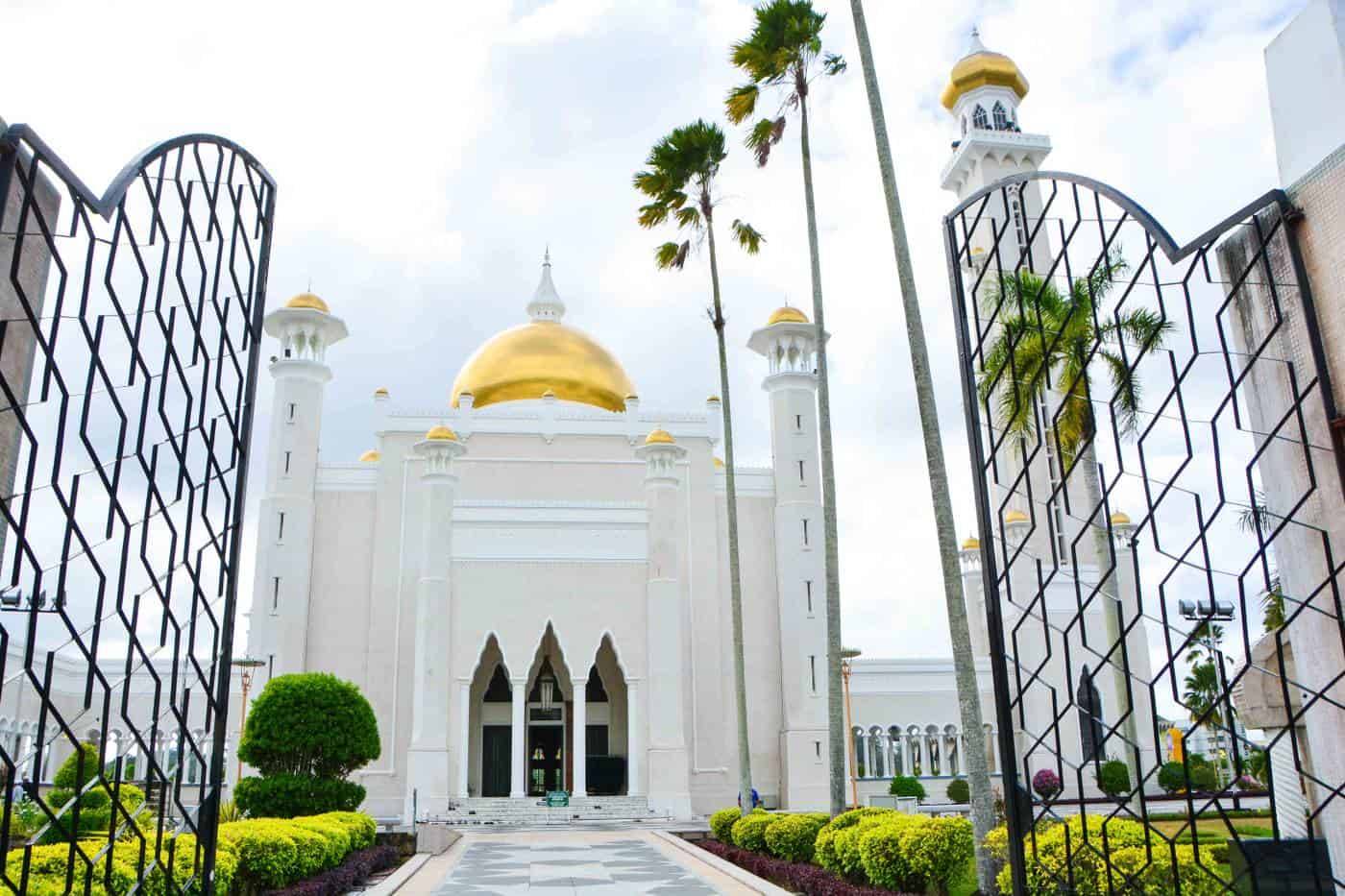
VISIT THE TRIBES OF WEST PAPUA (BEYOND ECO-TOURISM)
From past to the present, this region has a long meaty history of humans eating humans. Indeed, Papua is proudly a land of man-eaters, notorious for countless alarming cases when strangers were attacked, ruthlessly killed and eaten by the indigenous people.
Today, the western territories of the New Guinean island are still a field of the possibly last surviving tribes in the world who are still engaging in cannibalism. While for us this phenomenon seems absolutely horrendous for the locals it has always been a cultural norm, not an act out of hunger. Ritual cannibalism is the main symbol of their belief – animism.
These are the primitive tribes who dwell in the deep jungles of West Papua, that you can actually visit. However, the expedition is an extreme off the beaten path for the most adventurous travellers.

West Papua is a field of the possibly last surviving tribes in the world who are still engaging in cannibalism
ASMAT TRIBE – THE HEADHUNTERS
The tidal swamplands of West Papua`s southern coast are some of the least accessible parts of the world. This is the domain of the Asmat tribe famous for their spectacular wood carvings, considered to be among the world’s finest, but more importantly for being the legendary Headhunters.
Once, in the time of war, they ate brains of their enemies mixed with sago worms – that all served on the halved skull. Afterwards, they cleaned it and used it as a pillow to evoke respect and fear. They did not use to kill for food or not even the skull as a trophy but they worshipped the skull as a sacred object instead. After the skull was stripped of the soft parts like brain, eyes and skin the nasal nostrils were closed to prevent the evil spirits to enter the household were the decorated skulls were displayed. The warriors and their children would inhabit the names of enemies they had killed.
The Asmat Territory is divided into four major zones each of which features their own habits, costumes and practises their own rites and rituals: Northwest Asmat, Central Asmat, Braza River and Senga/Dairam Rivers.
Nowadays, the tribe of Asmat is ‘apparently’ free of cannibalism due to the hard work of international missionaries and a limited number of foreigners is welcome to visit some of these tribes (around 100 permits are granted a year by the local government) which enables little interaction between these Middle-Age villages and the Western civilisation.
KOROWAI TRIBE – THE TREE PEOPLE
The Korowai are neighbours of the Asmat, occupying the inland territory of Yaniruma, near Senga and Dairam rivers. These tribes live in the tree houses built up to 30-50 m above the ground, in the rainforest clearings of the deep southern jungles.
This ethnic group is to be one of the most remote ones and believed to continue practising rites related to cannibalism even these days. The difficult access did not allow the missionaries during the Dutch colonial period to come to these areas so they could civilise the Korowai people. Those few who made it to their outlying communities were eaten or driven away.
The Korowai are a quite interesting subgroup and they are also called the “Bedouins of Jungle” for their continuous moving from place to place in order to find food and hunt for crocodiles. They build and move their tree houses on a regular basis which makes very hard for the scientists to study them. Except for a nutshell covering their penises men do not wear clothes. Women only use a basic skirt made out of sago leaves and look after the tobacco fields.
This is the perfect destination for the most courageous adventurers and anthropologist expeditions. There is a possibility to visit the Korowai villages located on the border with the Asmat territory – they have become used to the strangers. The curious visitors of Papua can join a cultural expedition involving trekking to these outlandish communities. Yet, the risk factor and level of safety remain questionable.
KOMBAI TRIBE
The Kombai tribe is another jungle community building their homes high in the canopy. They live in clans along the Buzza River. The closest relatives to the Korowai, they have a very similar cultural background. Men wear the hornbill head instead of the gourd and a bird beak used as a protection for their genitals. Women are traditionally in charge of making sago – the starch obtained from the sago palm tree. Pigs serve as currency and they are sacred animals that get only sacrificed on a special occasion and cooked on the traditional earth-oven.
The Kombai still strictly hold on their ancient animist beliefs. Leadership structures are based on the quality of strong man – and that has to be proven by their hunting skills. The Kombai used to kill their enemies for their organs and blood which were eaten and the bodies were stuffed with leaves and grass.
Kombai ethnic group is associated with endo-cannibalism – a ritual cannibalism within the same community. In the belief of gaining some of the qualities of the deceased person family members would often eat internal organs and drink the blood of their own relatives. Totemism, black magic, witchcraft and sorcery are an important part of their everyday life.
TRAVEL TIP
The southern lowlands are an extreme off the beaten track destination and travelling independently to these regions is not only virtually impossible but also not recommended. Therefore, always joining an organised expedition or arrange a tour.
For more information, trekking and cultural tours check out following reliable tour operator: http://www.putrapapuatours.com/home.html
NOTE
To travel to Papua you must hold a valid visa to be able to enter the country. Besides, to be allowed to visit any destination in the Indonesian Papua except for the capital city of Jayapura, Sorong and Biak you will need to apply for Surat Jalan – a travel permit. That can be obtained at the central police station in Jayapura once arrived for about $10 USD.
It is always advisable to inquire about the safety situation in West Papua or in any location you intend to visit due to the presence of violence. There are frequent tribal conflicts which you should avoid as much as possible when travelling.
Malaria pills and vaccination against the Yellow Fever is strongly recommended and some countries such as even request all visitors get immunised prior to the entry to.
Remember that ALCOHOL is illegal in Papua.
WHEN TO TRAVEL
The dry season goes from May till October. It is strongly recommended to travel within these months as the wet season brings strong winds, heavy storms as a result of what the region becomes inaccessible, many tour operators close and flights are often cancelled.
HOW TO GET THERE
The gateway to the southern Papuan tribes is Dekai village. The only way to get there is from the capital city Jayapura. The flight via Trigana Air takes approximately 50 min.
There are 3 main domestic airlines operating between Jakarta/Java or Denpasar/Bali to Jayapura/Papua – Lion Air, Garuda Indonesia and Sriwijaya Air.
For all international flights check out www.skyscanner.com or www.momondo.com

